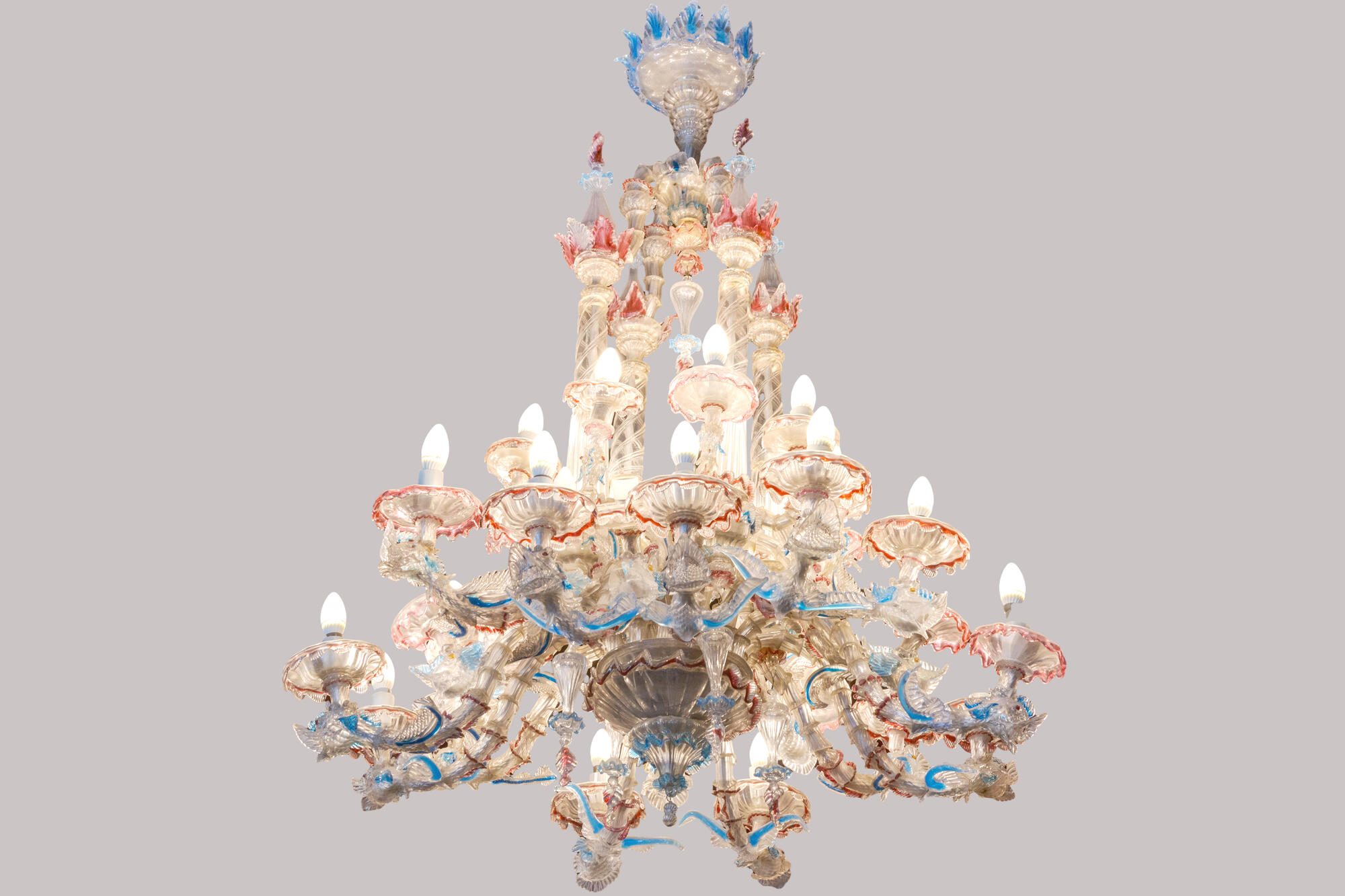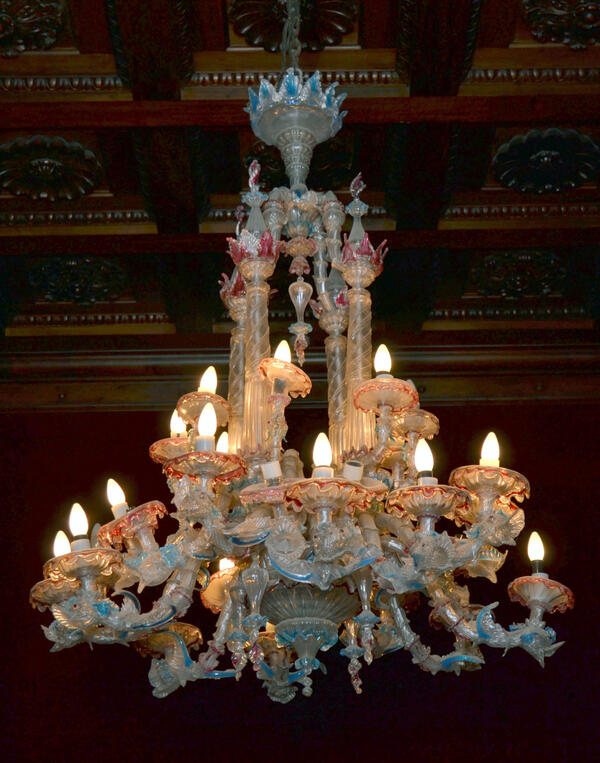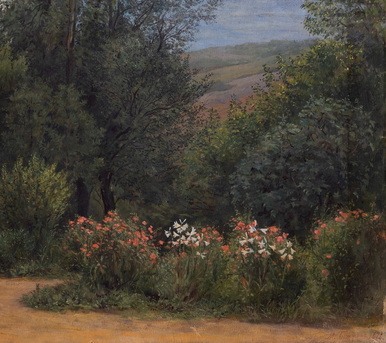The waiting room of the new Grand Imperial Palace is adorned with a Venetian chandelier, inspired by medieval Italian pieces of the Renaissance period. It was commissioned by Empress Alexandra Feodorovna in Turin and then purchased and sent to Livadia in Crimea.
The chandelier was delivered by an Italian sculptor, painter and composer Pietro Canonica (1869–1959). Canonica studied at the Academy of Fine Arts in Turin and created a number of sculptures of European monarchs and aristocrats. Pietro Canonica can be rightfully considered the favorite sculptor of the family of Emperor Nicholas II. In 1908, he made a bust of Maria Pavlovna the Elder and was invited to move to Russia by her husband, Grand Duke Vladimir Alexandrovich, who was also President of the Academy of Arts. By taking orders from members of the Romanov dynasty, Pietro Canonica soon rose to fame and was introduced to the Imperial family as early as 1910.
Canonica’s taste in art turned out to be similar to that of Empress Alexandra Feodorovna. The Empress had a penchant for art and was well-versed in Italian literature of the late 19th — early 20th centuries. The sculptor’s works in the collection of the Pietro Canonica Museum in Stresa, Italy prove his affiliation with the Saint Petersburg Imperial Court and include several busts of Nicholas II, as well as busts of the Tsarina and Tsarevich. Unfortunately, those are just plaster preparatory studies, as almost all of the originals were destroyed following the revolution. The entire series of works created in Russia is gone except for two pieces — a silver-plated bronze bust of Nicholas II on a jade base and a marble bust of Alexandra Feodorovna, which were transferred to the Pavlovsk Museum Preserve from the Central Repository of Museum Collections in 1956 and are believed to have been previously displayed at the Alexander Palace in Tsarskoye Selo.
The chandelier has an intricate shape and consists of multiple tiers. The base of the chandelier is a relief glass plafond, crowned with a cone-shaped glass top decorated with filigree glass. The lower tier is shaped like winged fish with decorative rosettes on their heads which serve as candleholders. Originally, the rosettes held stylized candles made of Murano glass. The palace had electricity, and the chandelier was designed accordingly.
The chandelier was delivered by an Italian sculptor, painter and composer Pietro Canonica (1869–1959). Canonica studied at the Academy of Fine Arts in Turin and created a number of sculptures of European monarchs and aristocrats. Pietro Canonica can be rightfully considered the favorite sculptor of the family of Emperor Nicholas II. In 1908, he made a bust of Maria Pavlovna the Elder and was invited to move to Russia by her husband, Grand Duke Vladimir Alexandrovich, who was also President of the Academy of Arts. By taking orders from members of the Romanov dynasty, Pietro Canonica soon rose to fame and was introduced to the Imperial family as early as 1910.
Canonica’s taste in art turned out to be similar to that of Empress Alexandra Feodorovna. The Empress had a penchant for art and was well-versed in Italian literature of the late 19th — early 20th centuries. The sculptor’s works in the collection of the Pietro Canonica Museum in Stresa, Italy prove his affiliation with the Saint Petersburg Imperial Court and include several busts of Nicholas II, as well as busts of the Tsarina and Tsarevich. Unfortunately, those are just plaster preparatory studies, as almost all of the originals were destroyed following the revolution. The entire series of works created in Russia is gone except for two pieces — a silver-plated bronze bust of Nicholas II on a jade base and a marble bust of Alexandra Feodorovna, which were transferred to the Pavlovsk Museum Preserve from the Central Repository of Museum Collections in 1956 and are believed to have been previously displayed at the Alexander Palace in Tsarskoye Selo.
The chandelier has an intricate shape and consists of multiple tiers. The base of the chandelier is a relief glass plafond, crowned with a cone-shaped glass top decorated with filigree glass. The lower tier is shaped like winged fish with decorative rosettes on their heads which serve as candleholders. Originally, the rosettes held stylized candles made of Murano glass. The palace had electricity, and the chandelier was designed accordingly.



